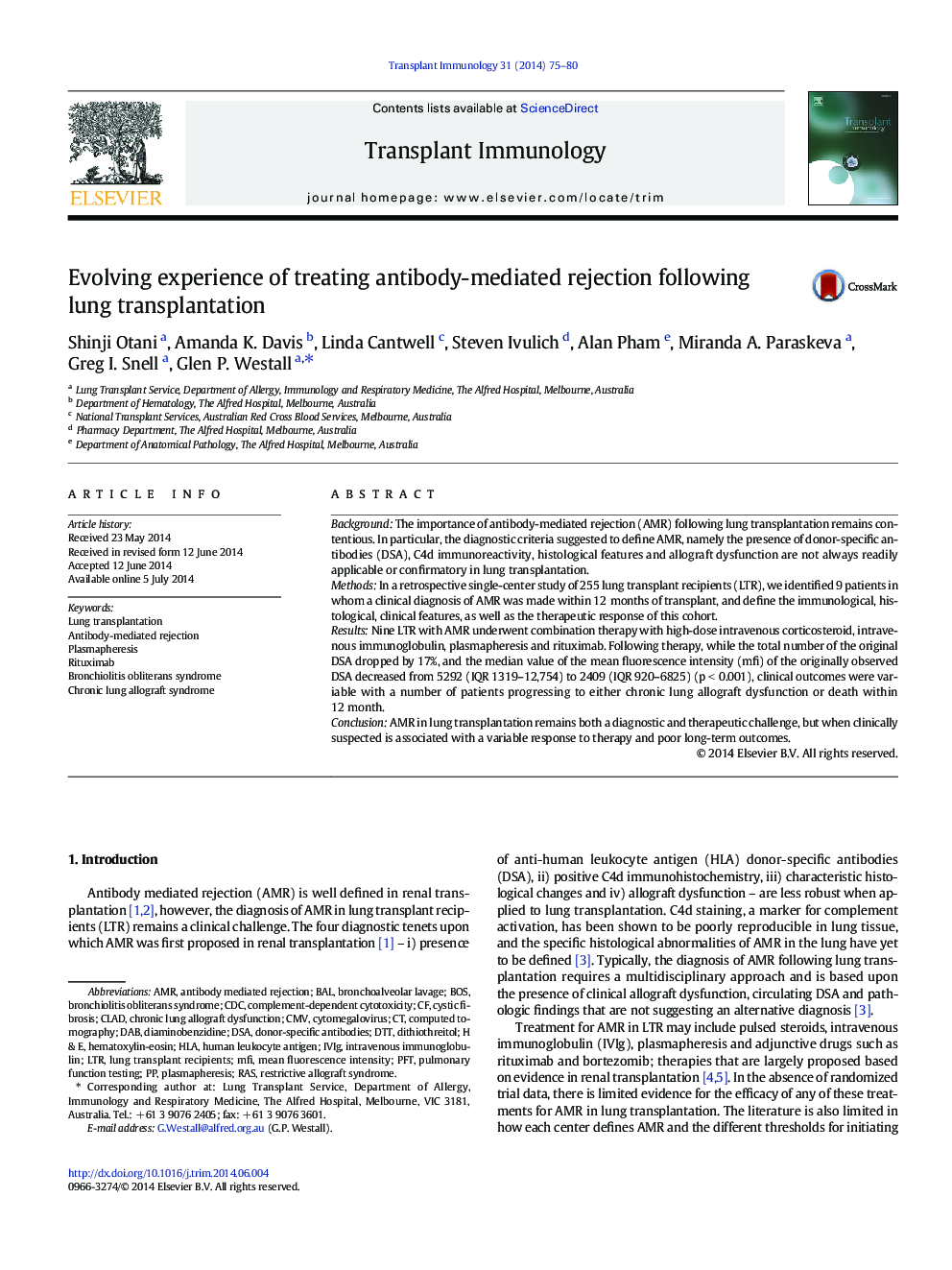| Article ID | Journal | Published Year | Pages | File Type |
|---|---|---|---|---|
| 3392082 | Transplant Immunology | 2014 | 6 Pages |
•AMR in lung transplantation remains a diagnostic challenge.•AMR is associated with allograft dysfunction early post-lung transplant.•Development of anti-HLA DSA is associated with allograft dysfunction.•AMR-directed therapy reduces DSA and improves lung function in select patients.•Decrease in DSA associated with clinical improvement in lung transplant recipients.
BackgroundThe importance of antibody-mediated rejection (AMR) following lung transplantation remains contentious. In particular, the diagnostic criteria suggested to define AMR, namely the presence of donor-specific antibodies (DSA), C4d immunoreactivity, histological features and allograft dysfunction are not always readily applicable or confirmatory in lung transplantation.MethodsIn a retrospective single-center study of 255 lung transplant recipients (LTR), we identified 9 patients in whom a clinical diagnosis of AMR was made within 12 months of transplant, and define the immunological, histological, clinical features, as well as the therapeutic response of this cohort.ResultsNine LTR with AMR underwent combination therapy with high-dose intravenous corticosteroid, intravenous immunoglobulin, plasmapheresis and rituximab. Following therapy, while the total number of the original DSA dropped by 17%, and the median value of the mean fluorescence intensity (mfi) of the originally observed DSA decreased from 5292 (IQR 1319–12,754) to 2409 (IQR 920–6825) (p < 0.001), clinical outcomes were variable with a number of patients progressing to either chronic lung allograft dysfunction or death within 12 month.ConclusionAMR in lung transplantation remains both a diagnostic and therapeutic challenge, but when clinically suspected is associated with a variable response to therapy and poor long-term outcomes.
